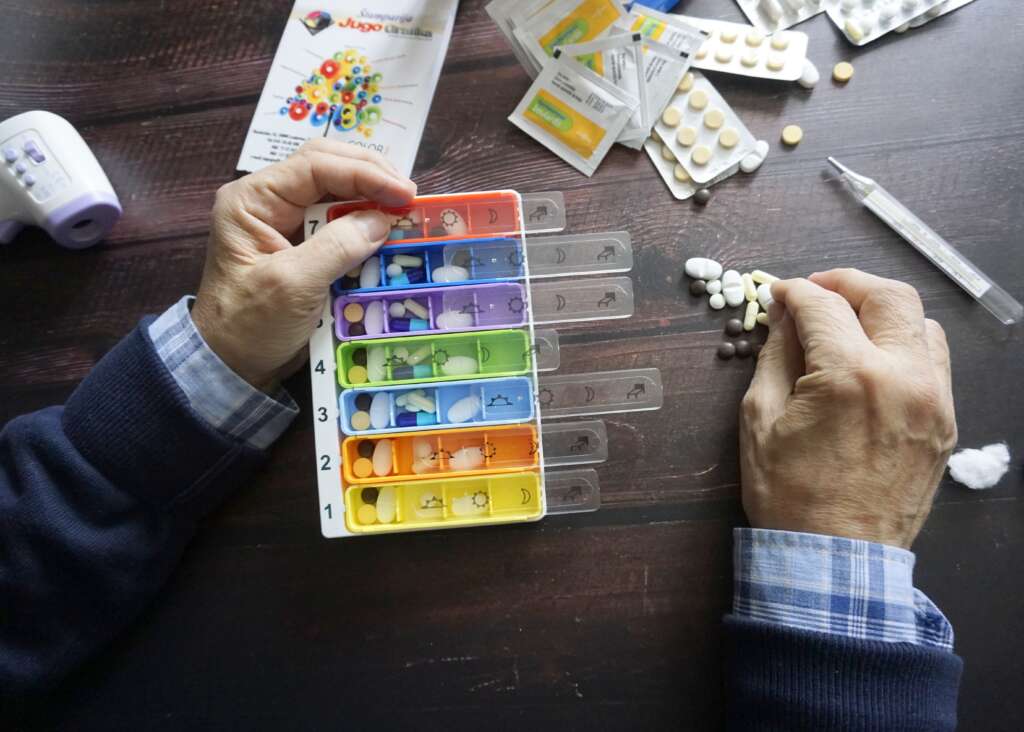Share This Article
Smart shoppers know the power of buying in bulk—whether it’s toilet paper at Costco or frozen vegetables for the freezer. But many people miss one of the biggest bulk buying opportunities sitting right in their medicine cabinet: switching from 30-day to 90-day prescription fills.
The Math That Makes Your Wallet Happy
Here’s the financial reality that pharmaceutical companies don’t advertise: if you pay a prescription copay, a 90-day supply often costs the same as a 30-day supply. Translation? Your $4.90 copay could get you a 90-day supply of medicine — or 60 extra days at no extra cost. That’s up to $39.20 in savings per year for just one medication.
The savings multiply quickly when you’re managing multiple chronic conditions. If you take three maintenance medications, you’re looking at over $100 in annual savings just by changing how you fill prescriptions. The copay for 90-day supplies typically runs two-and-a-half times the cost of a 30-day supply, which still means you’re getting an extra month’s worth essentially free.
Contrary to popular belief, insurance copays are higher than the actual drug cost about 25 percent of the time. Sometimes you’ll save money by paying cash instead of using insurance—especially for generics.
Beyond Dollars: The Hidden Health Benefits
You’ll save time, only having to refill four times a year instead of twelve. But there’s an unexpected bonus: studies show dramatic improvements in medication adherence with 90-day supplies.
The 12-month adherence rates were higher for patients who filled 90-day versus 30-day supplies: statins improved from 75.3% to 83.1%, blood pressure medications from 60.9% to 71.1%, and beta-blockers from 62.9% to 72.7%. That’s not just convenience—it’s better health outcomes.

Mail Order Myth Busted
You don’t have to use mail order to get 90-day supplies anymore. Major pharmacy chains now offer 90-day prescriptions with the same convenience as 30-day fills. According to market research, nearly 4 of 5 patients prefer receiving their 90-day prescription at a retail pharmacy rather than by mail.
Use GoodRx’s pharmacy finder to locate participating pharmacies, or check your insurance plan’s network to avoid surprise costs.
What Qualifies and How to Get Started
Maintenance drugs for chronic conditions like high blood pressure, cholesterol, diabetes, and asthma typically qualify. Your pharmacist can tell you if each medication qualifies when running it through the system.
Here’s your action plan: Ask your healthcare provider to write prescriptions for 90-day supplies with appropriate refills. Often doctors will call prescriptions directly to your pharmacy, so have your pharmacy’s phone number ready.
There’s a heads-up worth noting: many plans now mandate 90-day fills for maintenance medications after initial trial periods. Plan participants who don’t follow this procedure become responsible for the full medication cost.
Smart Shopping Strategies
Compare prices using GoodRx before filling prescriptions. Look for manufacturer discount cards which can stack with 90-day savings for maximum impact.
Some pharmacy chains offer automatic refill programs that eliminate the hassle of remembering refill dates while ensuring you never run out of medications.
Do all insurance plans offer 90-day supplies?
Most plans offer this option, but coverage varies. Check your specific plan benefits or contact your insurance provider directly to confirm participation.
Can I get 90-day supplies at any pharmacy?
Many major chains participate, but your insurance may restrict which pharmacies you can use. Always verify with your plan before filling to avoid surprise costs.
What if my doctor refuses 90-day prescriptions?
Doctors sometimes prefer 30-day supplies for new medications or when adjusting dosages. Once you’re stable on a medication, most providers readily write 90-day prescriptions.
Are there downsides to 90-day supplies?
The main concern is medication waste if your dosage changes. However, research shows automated 90-day supplies actually lead to less waste than 30-day supplies.
How much can I really save annually?
Individual savings vary, but patients commonly save $100-300 per year across multiple medications. The exact amount depends on your copay structure and number of maintenance medications.


